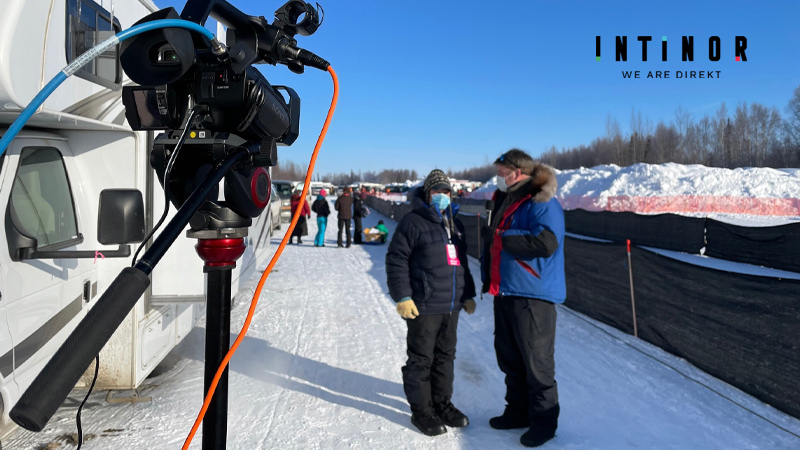
Repost from Intinor blog
The Iditarod is both the most challenging and the most recognised event in sled dog racing. Each year, mushers and their animals trek more than 1500km around Alaska, from Anchorage to Nome via the ghost town of Iditarod.
In a normal year, the race takes in a number of native villages, creating a strong sense of atmosphere and belonging to the event. Those villages also give natural locations for the online video coverage. 2021, of course, is anything but a normal year. Protecting the locals by keeping the racers and race officials well apart is just one of the challenges for this year’s race.
Cinematographer and editor Art Aldrich, through his production company OTEK TV, has been behind the Live coverage of the Iditarod since 2007. He has masterminded continued expansion of the coverage, fueling growing interest in the sport. This year, he had to deliver the same detailed video streams, but with a minimum crew on location.
Aldrich had already solved many of the challenges of remote production, thanks to his work for corporate sponsors at the top PGA golf tournaments. He put crews at a safe social distance from the featured players and followed them around the courses, feeding signals back to a central production facility in Aldrich’s home in New York City.
In this Case Study, Intinor technology was used successfully broadcast the Iditarod race from very remote locations.

Standard cameras plugged into Direkt Link 600 backpacks with bonded cellular so the operators could work alone, completely free from restrictions. Multiple 4G LTE networks carried the signal back to the production centre.
This experience suggested to Aldrich a way to cover the Iditarod. The obvious problem, though, is that there is very little 4G – or indeed any – cellular coverage in remote Alaska.
Organizers the Iditarod Trail Committee (ITC) already had a partnership deal with telco GCI. They provided portable V-Sat links, using 1 to 2 meter dishes, which could be carried by the crews and quickly set up for links back to base.


“Upload speed varied on each location; on some location we couldn’t get more then 500kbps” Aldrich explained. “Using Bifrost and other new technologies from Intinor, we still got good pictures back. We could also set up where we wanted – in the past there had been parts of the trail where we couldn’t get a signal, but now we can get pictures from any of the checkpoints. We’re actually getting more live feeds than we’ve had in the past.”
The race is covered by three live production teams, all Iditarod veterans. Each team is two people travelling from checkpoint to checkpoint in ski-equipped planes: the camera operator and a producer who acts as on-screen talent when needed. Each kit – which has to fit in the very small planes – includes a Sony camera plus a Marshall POV camera along with the Intinor Direkt Link 600 encoder and I-Direct satellite uplink…[ continue reading on the Intinor blog ]


